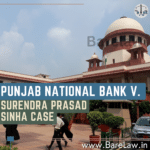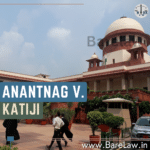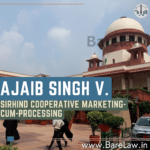
Table of Contents
The case of Ram Newaz v. Nankoo, AIR 1926 All 283 | BareLaw
This 1926 case of Ram Newaz v. Nankoo, AIR 1926 All 283 engages with the intricacies of property rights and legal interpretation in India. The matter was about a land dispute, which brings out how sale deeds are to be read and its effects on reversionary interests.
Introduction:
The Indian property case of Ram Newaz v. Nankoo is a significant case that discloses the relationship between property rights, legal interpretation and reversionary interests. The aim of this article is to consider the background to this case, the legal issues it raises and its implications for property law and inheritance laws.
Background and Facts:
The dispute in Ram Newaz v. Nankoo was regarding properties which had been transferred during 1884 by Ram Charan who disposed off some part of his properties particularly nine pie odd share of a village less two bighas thus claiming that they were not part of the sale two bighas that belonged to these 2 bighas as he was expected to sell them were claimed by plaintiffs (reversioners) because they were not included in original sale when defendant contended otherwise as purchasers under vendee of such rights.
Legal Issues:
What was central in this case is how to understand the sale deed executed by Ram Charan. He sold his share but those pieces measuring two bighas would remain with him for life after which they will pass on directly to his heirs who are his lineal male descendants but there will be no alienation right over the excluded land won’t belong either him or progeny according to document.
Judicial Observations and Decision:
Whether this was an absolute transfer of nine pies odd without selling anything other than 2 bighas or elsewhere? According to plaintiff these two bighas did not form part of what their father gave up; therefore they are entitled to it being their own after him. In order to determine true intention of parties & legal nature of these 2 Bighas land, court had no option except interpreting sale deed.
Implications and Analysis:
This case demonstrates why clear legal drafting is important and elucidates problems with interpreting legal documents that arise from property disputes. It shows how judicial interpretation plays a critical role in property rights cases and it demonstrates that reversionary interests are a key component of Indian property law.
Conclusion:
Ram Newaz v. Nankoo is an example of an area within the field of property law which can sometimes become very difficult as proper understanding of legal documents are pitted against each other. This highlight the broader perspective about what constitutes property right and inheritance laws in India through some cases involving such disagreements and their resolution by courts.





